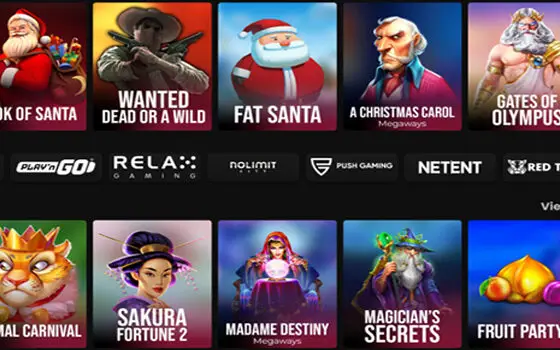The mobile gaming industry has experienced exceptional growth in the last decade, with millions of people worldwide relishing games on their smartphones and tablets. As this swiftly changing market progresses, mobile game development outsourcing has become a crucial factor in staying ahead of the curve. We will delve into some of the most thrilling mobile gaming phenomena and examine how outsourcing mobile game development contributes to shaping the future of gaming.
The rise of hyper-casual games
In recent years, the mobile gaming landscape has seen a significant shift with the meteoric rise of hyper-casual games. These games are characterized by:
- Simple Mechanics: Hyper-casual games typically feature easy-to-understand gameplay mechanics that don’t require extensive tutorials or learning curves.
- Minimalistic Design: These games often sport clean, straightforward graphics and user interfaces, which contribute to their accessible and inviting nature.Quick Gameplay Sessions: Hyper-casual games are designed for short bursts of play. These titles allow players to jump in and out of the game with ease.
Some notable examples of successful hyper-casual games are:
- Flappy Bird: A simple yet addictive game where players navigate a bird through a series of pipes.
- Helix Jump: A fast-paced, visually appealing game that challenges players to navigate a bouncing ball through a rotating helix tower.
- Temple Run: An endless runner game that tasks players with navigating a treacherous path while collecting coins and avoiding obstacles.
The increasing popularity of hyper-casual games can be attributed to several factors:
- Pick-up-and-Play Nature: Their simplicity allows players to quickly start playing, making them ideal for on-the-go gaming.
- Broad Appeal: Hyper-casual games cater to a wide range of audience. Targeting casual gamers looking for a quick gaming fix during breaks or commutes.
- Accessibility: The minimalistic design make these games easy to pick up for players of all ages and skill levels.
As the mobile gaming market continues to evolve, the rise of hyper-casual games showcases a growing demand for accessible gaming experiences that cater to diverse audiences.
Augmented Reality (AR) and Virtual Reality (VR) in mobile gaming
AR and VR technology have begun to make their mark on the mobile gaming scene. Both offer players immersive and interactive experiences. Popular mobile games utilizing AR technology include Pokémon GO and Harry Potter: Wizards Unite. As AR and VR technology evolve, we can expect to see even more innovative gaming experiences on mobile devices.
Cross-platform play and cloud gaming
Another trend that’s gaining momentum is cross-platform play and cloud gaming. Cross-platform play allows users to enjoy games with friends across different devices. Meanwhile cloud gaming enables players to stream games directly to their devices without the need for high-end hardware. Services like NVIDIA GeForce Now and Microsoft’s xCloud are paving the way for a future where mobile gamers can enjoy high-quality gaming experiences without limitations.
Social and multiplayer mobile gaming
The social aspect of gaming has become increasingly important in recent years. Many popular mobile games offer multiplayer modes and robust online communities. Games like Clash of Clans, Fortnite, and Among Us have demonstrated the potential for mobile games to foster deep social connections and even spawn esports competitions. This trend is likely to continue as developers prioritize social features in their games to keep players engaged.
Monetization strategies and in-app purchases
As the mobile gaming market continues to grow, developers are constantly exploring new monetization strategies to generate revenue. In-app purchases and advertisements are common ways to monetize mobile games, with many successful titles adopting a “freemium” model. Striking the right balance between user experience and profitability is crucial. For developers both elements ensure that their games remain enjoyable while generating revenue.
The impact of 5G on mobile gaming
The advent of 5G technology promises to revolutionize the mobile gaming landscape. With faster download speeds, reduced latency, and increased network capacity, 5G will enable new gaming experiences. Experiences that were previously impossible on mobile devices. From real-time multiplayer games to advanced AR and VR experiences, the possibilities for mobile gaming in a 5G world are vast and exciting.
Game streaming and subscription services
Game streaming and subscription services have emerged as a prominent trend in the mobile gaming market. Said services will revolutionize how players access and play their favorite games. Here are some key aspects of these services:
- Definition: Game streaming services allow users to play games remotely by streaming the game to their device, eliminating the need for high-end hardware. Subscription services provide users access to a curated library of games for a monthly fee.
- Popular Examples: Some popular mobile game streaming and subscription services are Apple Arcade, Google Play Pass, and Xbox Game Pass. These services provide players access to a wide range of games, including exclusive titles, without having to purchase each game individually.
- Benefits for Players: Game streaming and subscription services provide players with a cost-effective and convenient way to play games. They can enjoy a diverse selection of games without investing in expensive gaming equipment or purchasing games individually. These services also provide access to new releases and exclusive titles that may not be available elsewhere.
- Benefits for Developers: Game streaming and subscription services can provide developers with a steady source of income and exposure for their games. It offers an alternative to the traditional one-time purchase model, providing a consistent revenue stream that can help fund future game development.
- Reshaping the Industry: The emergence of game streaming and subscription services may reshape how gamers discover and play new games, as well as how developers monetize their creations. This trend offers an exciting opportunity for the mobile gaming industry to explore new business models and revenue streams.
As game streaming and subscription services become more prevalent in the mobile gaming market, it’s clear that they have the potential to revolutionize how players access and play games.
Conclusion
The mobile gaming landscape is constantly evolving, driven by innovative trends and emerging technologies. From the rise of hyper-casual games to the impact of 5G and game streaming services, these trends are reshaping how we play and enjoy games on our mobile devices. As we look to the future, it’s clear that mobile gaming will continue to grow and offer new, exciting experiences for gamers around the world. By keeping an eye on these trends and embracing the possibilities they present, both developers and players can ensure that they stay ahead of the curve and make the most of the mobile gaming revolution.



























